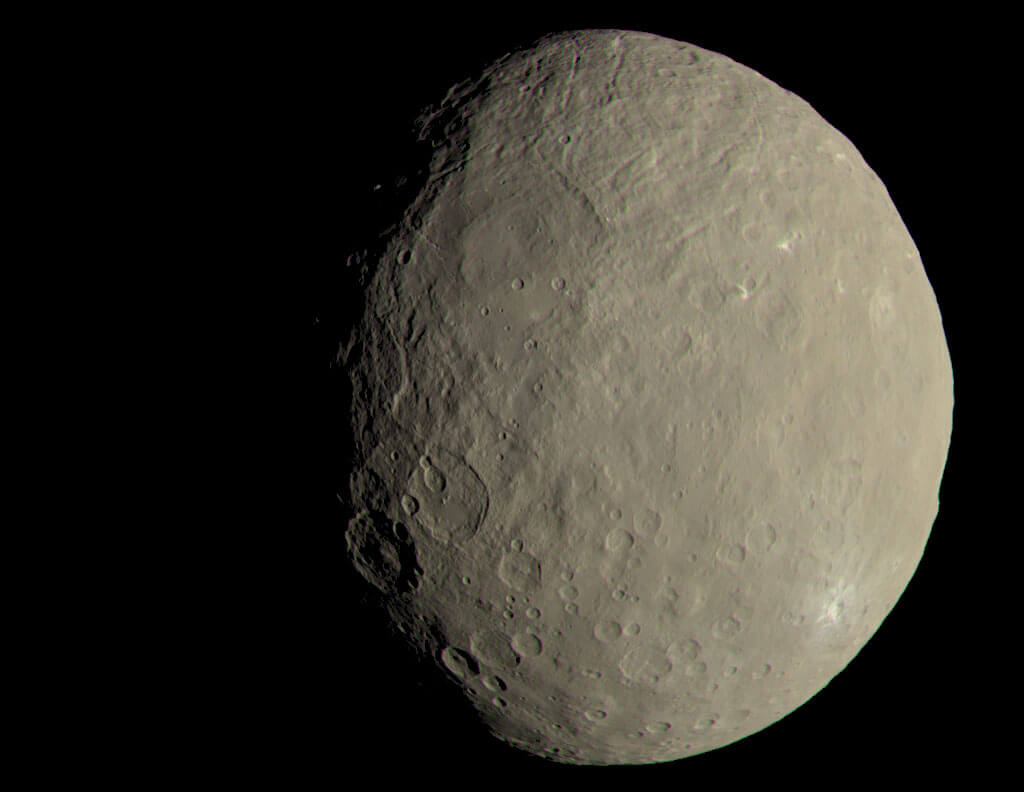- Get link
- X
- Other Apps

Astronomers working with the NASA Dawn spacecraft have published new images of the dwarf planet Ceres in high resolution, and also shed more light on what it consists of. One of the published images shows the crater Okkator. He was photographed on October 16 from a distance of 1500 kilometers above the surface.
The crater has one interesting feature. This is the brightest crater of a dwarf planet, and scientists have figured out why it is so bright. The fact is that almost the entire crater consists of salt. The team of scientists believes that the impact collision that formed this crater most likely opened access to some kind of saline liquid under the surface. Upon reaching the surface, it instantly froze, turned into ice vapor, which settled on the walls of the crater and formed a kind of salt shell.
In addition to the image of the crater Occator, a team of researchers also published an image that shows how Ceres may look when viewed with the naked eye. The image below was created on the basis of several photos taken using red, green and blue filters.

In the near future we will be able to learn more about Ceres, as the scientists plan to get more information about its structure and surface composition.
The article is based on materials .
- Get link
- X
- Other Apps
Comments
Post a Comment